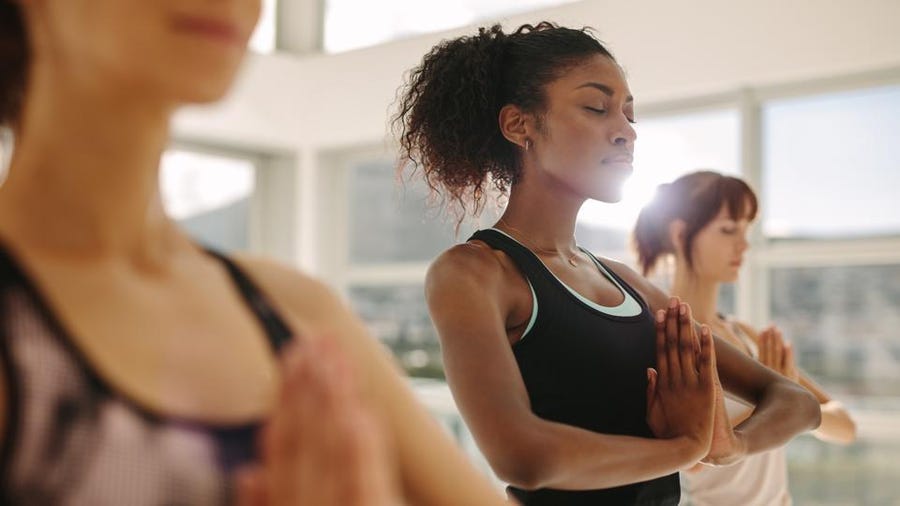
Usually, samyama has been confused with knowledge. In fact, it is the practice of gaining an insight into the object of meditation. It is a way to discover the true nature, and the process of letting it go of all its subtle feelings. Samyama has many other features.
Samyama is part one of the meditation process. It is a three-part process involving concentration, meditation and samadhi. This process is normally done on objects outside, such as a candle. It can also be done with internal objects. The soul or another person can be the object of meditation.
Samadhi (a type of meditation in that the yogi dissolves his or her self) is a form. A person must be focused on an object in order to attain samadhi. You can do this externally by focusing your gaze on the object. You can also do this internally by keeping your mind focused on the object.
This is how the yogi can gain insight into his mind, heart and microcosm. Samyama is a difficult and rewarding journey. But it can also be lonely and discouraging. It is possible to start small and build up over time. You can start this journey every day by practicing yoga regularly. Through a more subtle, holistic experience, the goal is to have a deeper understanding and appreciation of the world.

FAQ
What types of yoga do you have?
Bikram Yoga, also known as Bikram heated yoga, is the most common type of yoga. Other forms include Hatha, Ashtanga, Vinyasa, Iyengar, Kundalini, Yin, Power Yoga, Flow Yoga, Reiki, Pilates, Restorative, Aerial, etc.
How long does it take to learn yoga?
As with any skill, you must train your brain to perform yoga correctly. But once you've learned basic positions, you'll be able to practice yoga at home without much trouble.
To start, complete about 20-30 minutes of warm-ups before beginning your class. After that, take 5-10 minutes to warm up and do some simple stretches. You can then progress to more difficult poses.
After mastering the basics, you can progress to intermediate classes where you will learn more advanced moves. If you are just starting yoga, you might begin with basic poses such as the Tree (Vrksasana), and Mountain (Tadasana) standing poses.
What happens if I stop practicing yoga?
It is normal to lose enthusiasm after a while. However, your body may become stiffer if you stop practicing yoga regularly. Poor posture, lack or aging may all lead to stiffness.
It may become less flexible as you age, so consider retaking a few classes. Keep up with your daily activities. Exercise strengthens your bones and muscles. So make sure to get enough sleep and eat well.
Is yoga safe?
Yes! Yoga is generally considered safe and low-risk. If you have any injuries or medical conditions, consult your doctor before starting a yoga practice.
Statistics
- The people in the yoga group were 37 percent more likely to have quit smoking by the end of the 8-week program. (nccih.nih.gov)
- Lock in 25% off your Founding Member rate. (corepoweryoga.com)
- Start your Fall off right with 20% off All Access Membership when you sign up by 9/25! (corepoweryoga.com)
- In comparison, a 125-pound person is estimated to burn 135 calories in 30 minutes of walking (at a pace of 15-minute miles) and 210 calories bicycling at a moderate pace on a stationary bike. (everydayhealth.com)
- According to the Agency for Healthcare Research and Quality, falls are incredibly common among older adults in nursing facilities. Even the simplest ones can increase the risk of death (24). (healthline.com)
External Links
How To
Can I do yoga during pregnancy?
Your ability to safely perform certain poses can be affected by pregnancy. Before you begin a new program for exercise, make sure to consult your doctor.
You can still perform many poses during pregnancy. These are some suggestions:
-
Do not lift any weights that are higher than your shoulders for pregnant women. Instead, use lightweight resistance bands or dumbbells.
-
Avoid deep twists. These could pressure your belly.
-
Avoid backbends until after you give birth. These can strain your lower back.
-
To deliver your baby safely, you should not be seated cross-legged or lying on your stomach.
-
If you are not cleared by your doctor to do inverted poses like headstands and handstands, don't try them.
-
Limit your practice to 30 minutes per day.
You can do yoga during pregnancy as long as you're able to. Your doctor will help you determine when you're ready to begin practicing yoga.